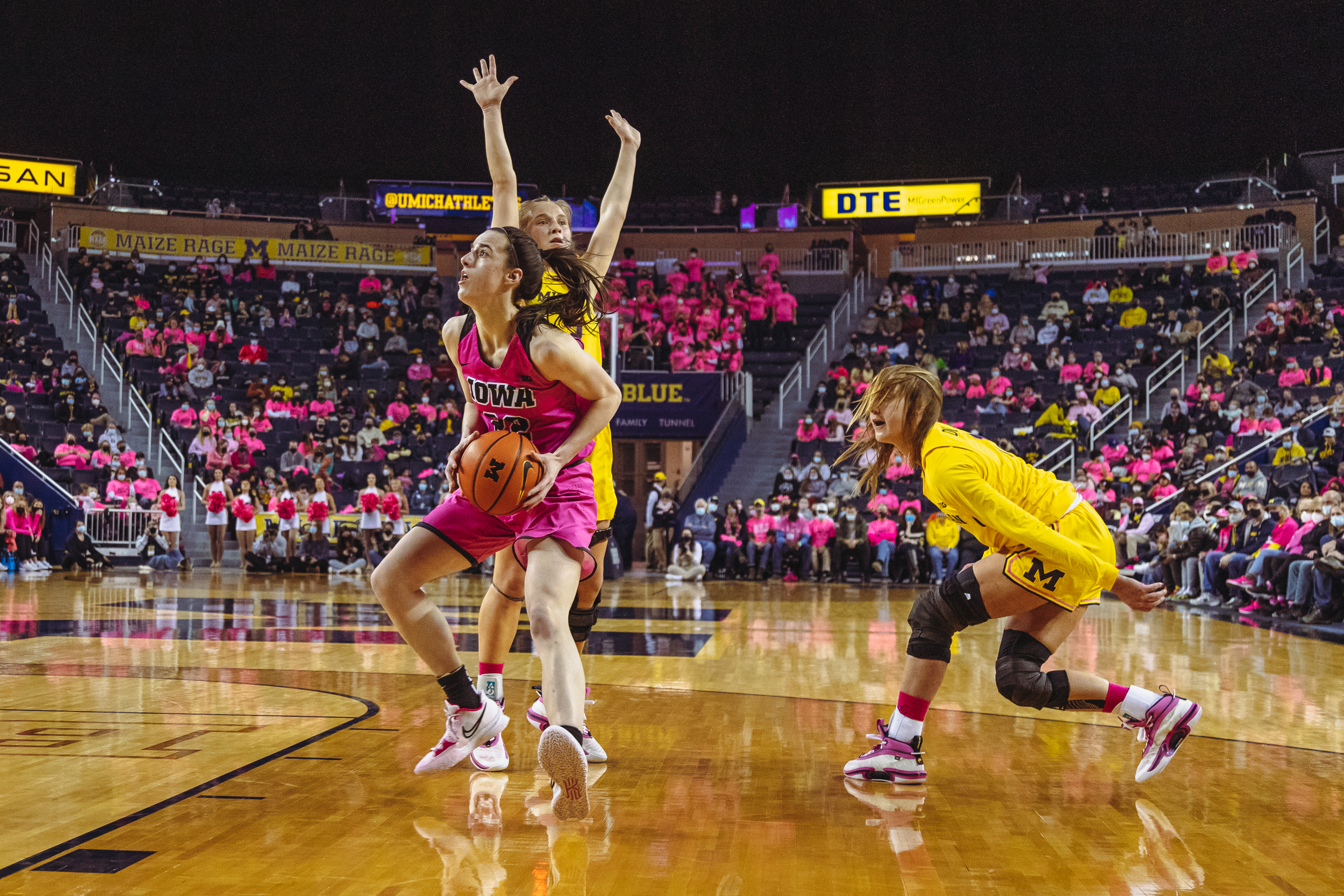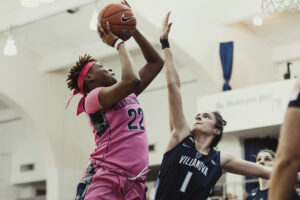One player comes to mind as the gold standard for high-volume, parking-lot-range shooting: Stephen Curry. For any young prospect who plays a similar style of basketball, comparisons to Curry are inevitable. Curry’s latest facsimile, Iowa star guard Caitlin Clark, isn’t branded as “the next Steph,” though. Rather, she’s known as “the Steph Curry of women’s basketball.” The comparison of Clark to Curry may seem flattering, but it glosses over nuanced differences between the two, and counterintuitively, it may actually underrate Clark’s dominance. While it’s true that Curry revolutionized basketball, Clark is on her way to establishing a legacy of her own—as the greatest college basketball player of all time.
Clark’s tournament performance primed her for an opportunity at achieving arguably the most prolific college basketball résumé ever. She posted unprecedented numbers in this year’s tournament, notching the highest-scoring triple doubles in NCAA tournament history and setting records for both total points scored and threes made. She commanded games with her pick-and-roll play and steady decision-making. The fourth quarter against undefeated South Carolina epitomized her dominance, in which she accounted for all of Iowa’s 18 points with a bucket or an assist and led her team in toppling the Gamecocks.
But her impact on the court extends beyond just counting stats. Clark’s gravity as a shooter bends defenses toward her, creating havoc as she sprints around screens. Just one miscommunication has the potential to generate easy shots for her teammates. In transition, the threat of Clark’s logo threes and cross-court passes renders defenses further off-balance. As soon as she crosses the half court line, the defense’s attention has to shift toward her.
Clark’s string of record-setting performances led the Hawkeyes—despite their deficiencies in size and athleticism—to the finals in one of the greatest individual tournament performances of all time. Understably so, media members connected the magic of Clark’s tournament run to Curry’s cinderella run with Davidson College in 2008.
Clark’s tournament performance was more than just a cinderella run, though; it was the latest mark of her collegiate dominance. She had just swept all the player of the year awards and became the fastest player in Division I women’s basketball to reach 2,000 points and the first to surpass 1,000 points and 300 assists in a single season.
If Clark maintains her current pace, she’s projected to become the NCAA’s all-time leader in points and assists next year. NIL incentives and an extra year of COVID eligibility could also keep Clark at Iowa for a fifth year, virtually guaranteeing her ascent to the top of the all-time points and assists lists, barring significant injuries. Winning a national championship—one of the few gaps in her résumé— with a team that hadn’t reached the Final Four since 1993 before this year would cement her status as one of the greatest college basketball players ever.
Comparisons to Curry are a useful reference for those who aren’t familiar with women’s basketball. No WNBA player shoots the ball as deep as Clark, and it’s hard to watch both players without drawing parallels between the two. However, the media’s quickness to liken Clark to Curry exposes an inconsistency in discourse surrounding women’s and men’s basketball. While NBA players have the privilege of representing the standard to which younger players aspire, WNBA players are overlooked as a point of comparison.
Connecticut Sun forward Alyssa Thomas drew comparisons as a college prospect to LeBron James for her athleticism and versatility. Triple-double outputs in college earned Sabrina Ionescu comparisons to Russell Westbrook. Las Vegas Aces guard Kelsey Plum was dubbed “the James Harden of women’s hoops” for her left-handed craftiness.
While comparisons that liken the games of women to men are plentiful, those that go the other way are virtually nonexistent. Now that the WNBA is 27 years old, there is no longer a need to race to the NBA’s pool of players when assessing who a WNBA prospect could become.
Viewership numbers from this year’s tournament made it clear that women’s basketball is growing more popular and its stars are shining brighter. LSU champion Angel Reese has entered the public spotlight with appearances on ESPN’s “First Take” and ABC’s “Good Morning America,” and Clark received a feature on SportsCenter when she was awarded the 2023 Wooden Women’s Player of the Year Award.
Amid the increase in exposure and popularity of women’s basketball, Clark is paving the way for players to make a name for themselves. Fans and media can appreciate her greatness without constantly invoking Curry to understand her style of play. Her résumé speaks for itself. The next generation of logo-shooting, jaw-dropping guards in women’s basketball won’t have to look to the NBA for a player to model their games after. They’ll have Caitlin Clark.





